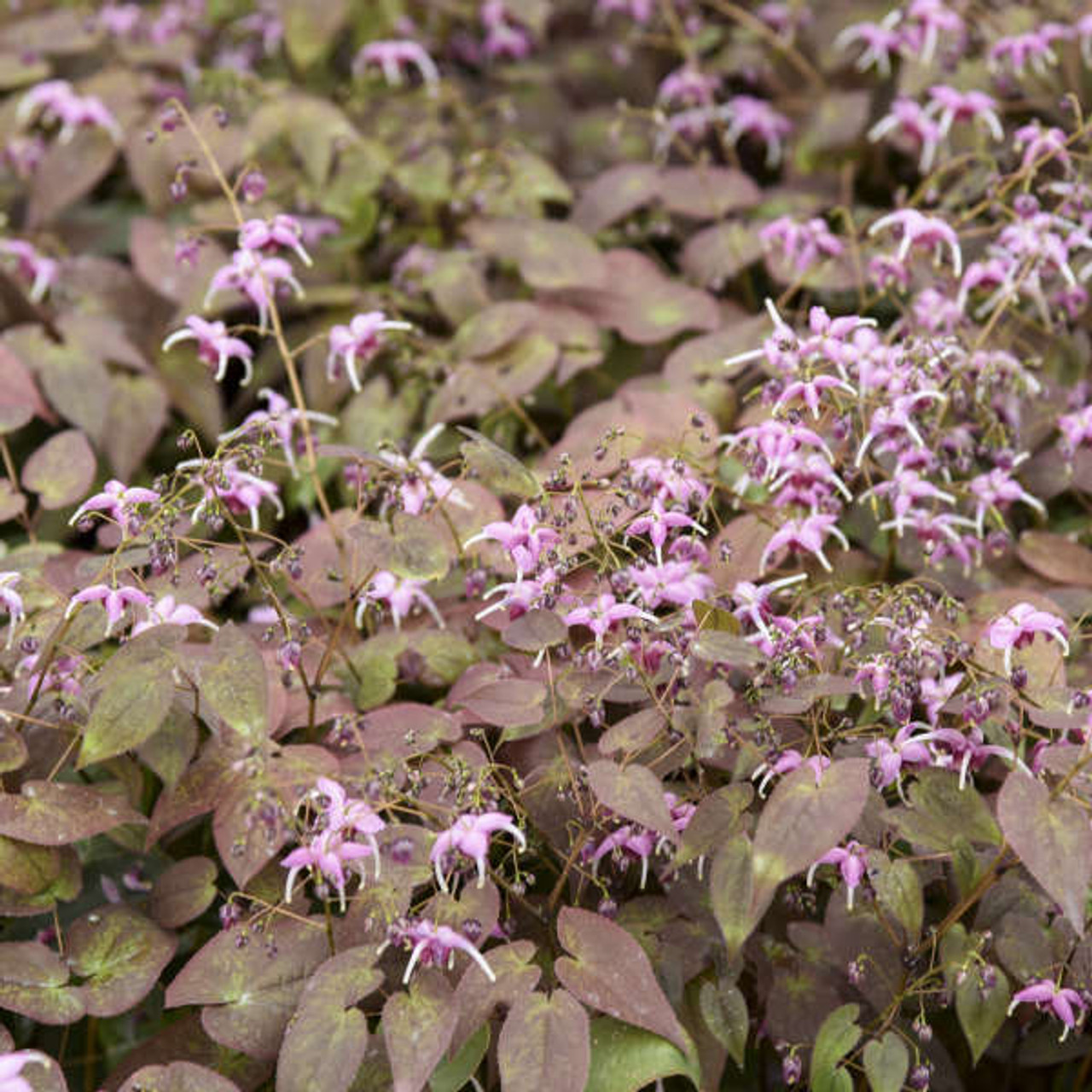Epimedium, pronounced ep-ih-MEE-dee-um, is also known as barrenwort, bishop's hat, fairy wings, horny goat weed, or yin yang huo.
Beautiful and easy-to-grow, Epimediums add a touch of elegance to any garden. Thriving where other plants may strive, Epimedium performs in shady, dry rocky soil. However, while tolerating these growing conditions, it will perform best in partial shade and loamy, sandy, moist but well-drained soil.
Depending on the variety, Epimedium is a long-lived deciduous or evergreen, low maintenance, deer resistant, and drought tolerant hardy perennial. Delicate small, four-pointed spring blooming flowers and striking foliage provide seasons of color, form, and texture in your shade garden. Flowers are often fragrant and attract bees and butterflies. As a mounding groundcover, Epimediums’ woody rhizomes will slowly spread through the garden without crowding other plants.
Herbaceous Perennial Plants, author Allan Armitage described Epimedium as “a genus whose time has come, with plenty of attributes and very few faults.”
-
Mature Size 8-12 in. tall, 12-36 in. wide
- Sun Exposure Partial shade to full shade
- Soil Type Loamy, sandy, moist but well-drained
- Soil pH slightly Acidic to neutral
- Bloom Time Spring
- Flower Color Red, pink, orange, yellow, purple, white
- Hardiness Zones 5-8
For best results planting Epimedium:
- Choose a partial to dappled shade location. Epimediums will tolerate full sun, but they will do best in areas that receive afternoon shade.
- Add organic matter to soil. Epimediums perform best in fertile, well-drained soil, but not consistently wet conditions.
- Plant in the spring or fall.
- Space about 12 inches apart.
- Water regularly, especially during the first year after planting. Water deeply, but not too often. Overwatering can lead to root rot.
- Fertilize in the spring with a balanced fertilizer.
- Mulch to help retain moisture and suppress weeds.
- Deadhead the flowers to encourage more blooms.
- Divide every 3-4 years to keep them healthy and vigorous.
Epimediums are relatively pest- and disease-free plants. However, they may be susceptible to aphids, slugs, and snails. If you see any pests, you can treat them with insecticidal soap or neem oil.
Pruning is only necessary for evergreen varieties of Epimedium. In early spring, before flowers appear, prune foliage to the ground. Leaves need to be trimmed to encourage fresh, healthy growth and a vibrant plant.
Propagating Epimedium
- Best to divide in the spring after flowering or in the late summer to early fall.
- Gently remove the plant and roots.
- Cut through the root system to divide the plant. Each division needs a healthy root system and foliage.
- Plant each division in its desired location.
Epimediums can be used in a mixed shade garden between trees and shrubs, as a border along a woodland path, as an accompaniment to spring bulbs and to solve an erosion problem.




